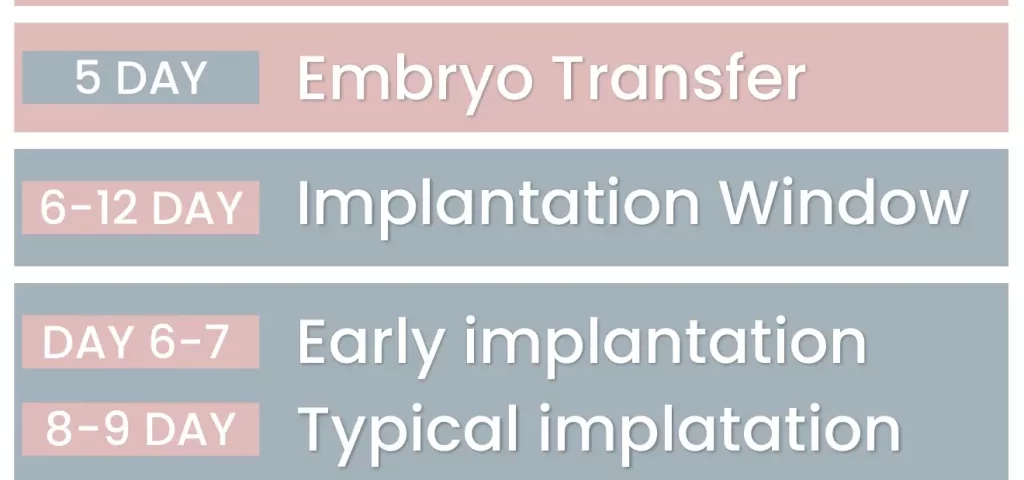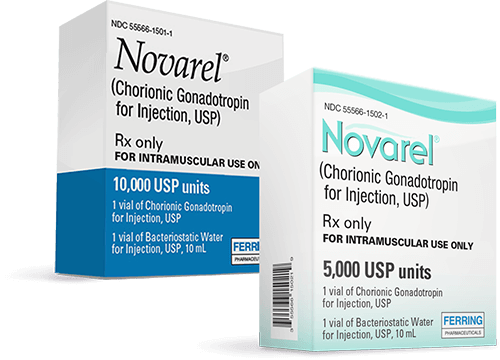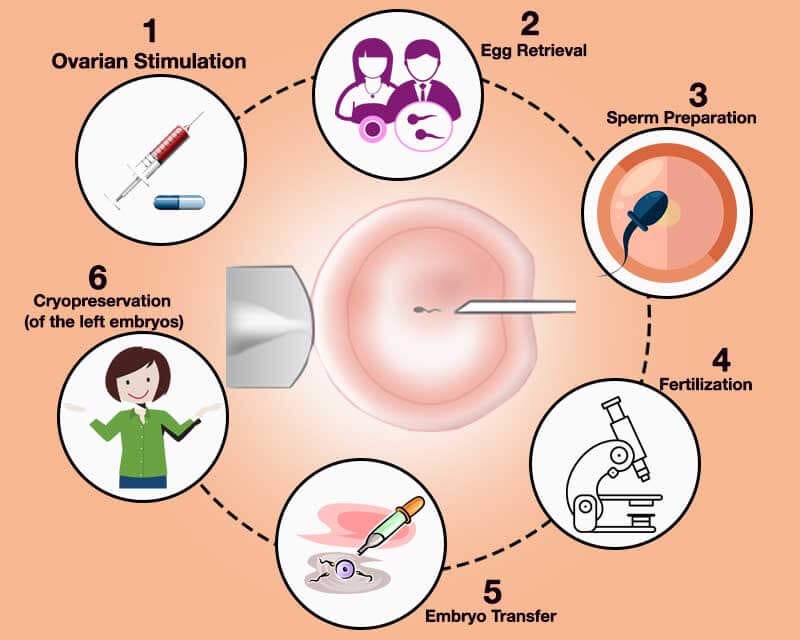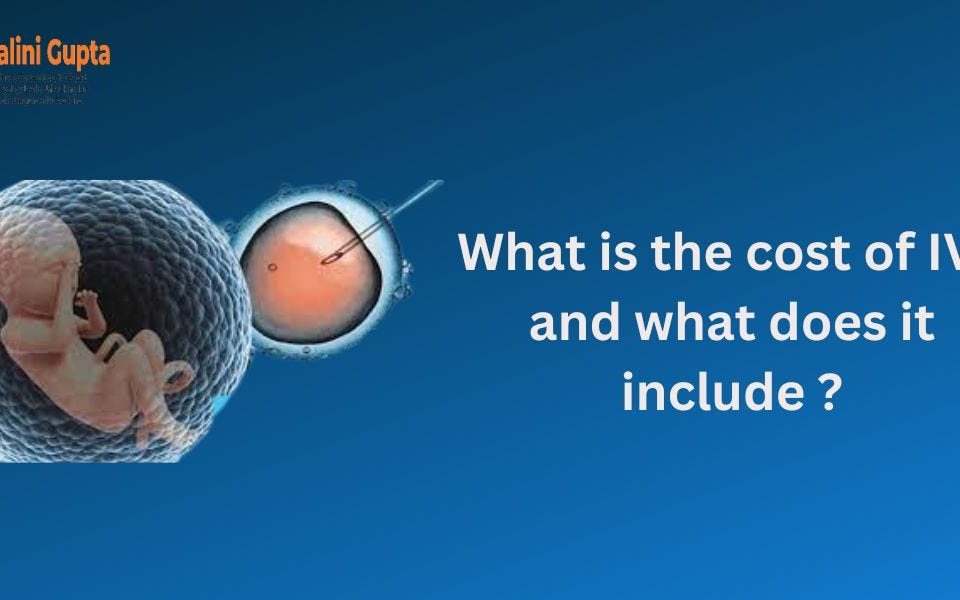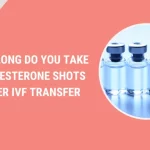
How Long Do You Take Progesterone Shots After IVF Transfer?
April 20, 2025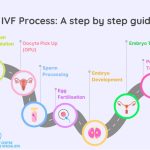
How Many Eggs Are Cultured in the IVF Process?
April 20, 2025How Long After IVF Transfer Does Implantation Occur?
If you’re going through in vitro fertilization (IVF), you’re probably counting down the days—and maybe even the hours—until you know if it worked. One of the biggest questions on your mind might be: How long after the embryo transfer does implantation happen? It’s a key moment in the journey, the point where that tiny embryo nestles into your uterine lining and, hopefully, starts growing into a baby. The wait can feel endless, but understanding what’s happening inside your body can make it a little less mysterious—and a lot more exciting.
In this deep dive, we’ll walk you through everything you need to know about implantation after an IVF transfer. From the timeline to the signs, the science, and even some fresh insights you won’t find everywhere else, we’ve got you covered. Whether it’s your first cycle or you’re a seasoned IVF pro, stick around—there’s something here for everyone.
What Is Implantation, Anyway?
Implantation is like the embryo’s big move-in day. After your doctor transfers the embryo into your uterus during IVF, it doesn’t just sit there—it has to find the perfect spot in your uterine lining to settle in. This lining, called the endometrium, has been prepped by hormones (and maybe some meds) to be soft, thick, and welcoming. Once the embryo attaches, it burrows in, connecting to your blood supply so it can start growing.
In a natural pregnancy, this happens after the egg is fertilized in the fallopian tube and travels to the uterus. With IVF, the journey’s a bit different—the embryo’s already made in a lab and placed right where it needs to be. But the implantation process? That’s still up to nature.
So, how long does it take for this magic to happen after your transfer? Let’s break it down.
The Timeline: When Does Implantation Happen After IVF?
The short answer: implantation usually happens 1 to 5 days after an IVF embryo transfer, depending on the embryo’s stage when it was transferred. But it’s not the same for everyone, and here’s why.
Day 3 vs. Day 5 Transfers: What’s the Difference?
In IVF, embryos are typically transferred either 3 days after fertilization (called a cleavage-stage transfer) or 5 days after (called a blastocyst transfer). The timing of implantation depends on which one you had:
- Day 3 Transfer (Cleavage Stage): These embryos are younger, with about 6-8 cells. After they’re placed in your uterus, they need a few more days to grow into a blastocyst—a stage where they’re ready to implant. Implantation usually happens 3 to 5 days after the transfer, so around days 6-8 post-fertilization.
- Day 5 Transfer (Blastocyst Stage): These embryos are more developed, with 100-200 cells and a fluid-filled cavity. Since they’re already at the blastocyst stage, they’re ready to implant sooner—typically 1 to 3 days after the transfer, so around days 6-8 post-fertilization too.
Here’s a quick look at the timeline:
| Transfer Type | Embryo Stage | Days Until Implantation | Total Days Post-Fertilization |
|---|---|---|---|
| Day 3 Transfer | Cleavage (6-8 cells) | 3-5 days | 6-8 days |
| Day 5 Transfer | Blastocyst | 1-3 days | 6-8 days |
No matter the transfer type, implantation tends to line up around 6-8 days after fertilization. That’s pretty close to what happens in a natural pregnancy, where the embryo implants 6-12 days after ovulation.
Day-by-Day: What’s Happening After Your Transfer?
Wondering what that little embryo is up to? Here’s a peek at the day-by-day action after a blastocyst (Day 5) transfer—since it’s the most common type today:
- Day 1 Post-Transfer: The blastocyst starts “hatching” out of its protective shell (the zona pellucida). Think of it like a chick breaking out of an egg—it’s getting ready to meet your uterus.
- Day 2 Post-Transfer: The embryo begins sticking to the uterine lining. This is called apposition—it’s like the embryo testing the waters, finding the coziest spot.
- Day 3 Post-Transfer: Implantation kicks into gear. The embryo burrows deeper, connecting to your blood vessels. This is when it officially “sticks.”
- Day 4-5 Post-Transfer: Implantation is usually complete. The embryo’s now fully embedded, and its cells start splitting into what will become the baby and the placenta.
For a Day 3 transfer, just add about 2 days to this timeline since the embryo needs extra time to reach the blastocyst stage.
Fresh vs. Frozen Transfers: Does It Matter?
You might be wondering if a fresh embryo transfer (done right after egg retrieval) is different from a frozen embryo transfer (FET, where embryos are thawed later). Good news: the implantation timeline is the same. A frozen blastocyst, once thawed, picks up right where it left off—ready to implant in 1-3 days. The only difference? FETs might give your body a break from stimulation meds, which some studies suggest could boost implantation success. More on that later!
What Affects Implantation Timing?
Implantation isn’t a one-size-fits-all deal. A few things can nudge the timeline—or even whether it happens at all:
- Embryo Quality: Healthier, higher-grade embryos (think A or B on the grading scale) are more likely to implant on time. Lower-quality ones might take longer or struggle to stick.
- Uterine Receptivity: Your endometrium needs to be just right—about 7-10 mm thick and “sticky” from progesterone. If it’s off, implantation might delay or fail.
- Your Age: As we age, egg and embryo quality can dip, which might slow things down. But with preimplantation genetic testing (PGT), age matters less if the embryo’s chromosomally normal.
- Hormone Levels: IVF meds like progesterone keep your uterus primed. Too little (or too much) can throw off the timing.
Fun fact: A 2023 study in Fertility and Sterility found that blastocysts with faster hatching rates implanted about a day earlier than slower ones. It’s a small difference, but it shows how unique each embryo’s journey is.
Signs of Implantation: What Should You Feel?
After your transfer, you might be hyper-aware of every twinge or cramp. Could it be implantation? Maybe! Here are some common signs—and a reality check:
- Light Spotting: Sometimes called implantation bleeding, this can happen when the embryo burrows in. It’s usually pink or brown, not heavy like a period, and lasts a day or two. About 1 in 3 women notice it.
- Mild Cramping: A little tugging or pulling in your lower belly might mean the embryo’s settling in. It’s usually gentler than period cramps.
- Sore Breasts: Progesterone (from meds or pregnancy) can make your chest tender or heavy.
- Fatigue: Feeling wiped out? Hormones could be at play, whether from meds or an early pregnancy.
But here’s the catch: these signs aren’t a sure thing. Some women feel nothing and still get a positive test. Others have every symptom and it’s just the meds talking. So, don’t stress if you’re symptom-free—it doesn’t mean it didn’t work.
Interactive Quiz: Are These Implantation Signs?
Take a quick second to test yourself! Check off what you’re feeling today:
- ✔️ Light spotting (not a full period)
- ✔️ Mild cramps or a pulling sensation
- ✔️ Tender breasts
- ✔️ Extra tired or sleepy
- ❌ Heavy bleeding
- ❌ Sharp, intense pain
If you checked mostly ✔️s, it could be implantation—but only a pregnancy test will tell for sure. How many did you mark? Share your score in your head (or with a friend)!
The Two-Week Wait: What’s Next?
After implantation, the embryo starts making human chorionic gonadotropin (hCG)—the pregnancy hormone. It takes a few days for levels to rise enough to detect:
- Day 9-11 Post-Transfer: For a Day 5 transfer, this is when a blood test (beta hCG) can usually confirm pregnancy. For Day 3, it’s more like Day 11-13.
- Home Tests: Pee-on-a-stick tests might work by Day 10-12 for Day 5 transfers, but they’re less reliable early on. False negatives are common if you test too soon.
Most clinics schedule your blood test 9-14 days after transfer. That’s the famous “two-week wait” (TWW)—a rollercoaster of hope, nerves, and maybe a little Googling.
Fresh Insights: What’s New in Implantation Research?
Let’s dig into some stuff you won’t find in every IVF blog. Recent science and trends are shedding new light on implantation—and it’s pretty cool.
The Implantation Window: How Wide Is It?
You’ve probably heard of the “window of implantation”—the few days when your uterus is most receptive. Traditionally, it’s thought to be days 6-10 post-ovulation (or post-fertilization in IVF). But a 2024 study in Human Reproduction suggests it might be wider—up to 7 days in some women. Using endometrial receptivity tests (like the ERA), doctors can pinpoint your personal window. If your transfer’s timed just right, success rates can jump by 10-15%. Have you asked your clinic about this?
Frozen Transfers Might Have an Edge
Here’s something fresh: FETs are stealing the spotlight. A 2023 analysis of over 50,000 cycles found that frozen blastocyst transfers had a 5-7% higher implantation rate than fresh ones. Why? Your body gets a break from egg-retrieval hormones, letting your uterus recover. Plus, freezing lets embryologists pick the strongest survivors. If you’re debating fresh vs. frozen, this might tip the scales.
Stress and Implantation: The Real Deal
Everyone says “relax” during the TWW, but does stress actually mess with implantation? A small 2024 study tracked cortisol (stress hormone) levels in 200 IVF patients. The result? High cortisol didn’t stop implantation—but it was linked to lower hCG levels early on, hinting at weaker early pregnancies. So, while stress won’t ruin everything, keeping calm might give your embryo a cozier start. Try a warm bath or a funny movie—can’t hurt, right?
Boosting Your Chances: Practical Tips for the TWW
You can’t force implantation, but you can set the stage. Here’s a mix of science-backed tips and some lesser-known ideas:
- Stay Hydrated: A well-hydrated uterus is a happy uterus. Aim for 8-10 cups of water a day—your lining will thank you.
- Keep Warm: Some swear by warm socks or a heating pad on your belly. No hard proof, but it might boost blood flow (and feels nice).
- Eat Smart: Load up on whole foods—think berries, nuts, and leafy greens. A 2022 study linked antioxidants to better endometrial health.
- Skip the Heavy Lifting: Avoid intense workouts or lugging groceries. Light walks or yoga? Perfect.
- Trust Your Meds: Stick to your progesterone schedule—whether shots, pills, or suppositories. It’s the glue holding this together.
What to Avoid During the Two-Week Wait
Here’s a quick checklist of no-nos:
- ❌ Hot tubs or saunas (overheating’s not great for embryos)
- ❌ Alcohol or caffeine overload (a little coffee’s fine, but don’t overdo it)
- ❌ Stress spirals (easier said than done, we know)
Real Stories: What It’s Like Waiting for Implantation
Sometimes, hearing from others makes it feel less lonely. Here are two quick tales from the IVF trenches:
- Jess, 34: “After my Day 5 transfer, I felt cramps on Day 2 and freaked out—thought it was my period. Turned out it was implantation! My beta was positive at Day 10. Don’t overthink every ache.”
- Maria, 39: “I had a Day 3 transfer and zero symptoms. I was sure it failed, but my nurse said that’s normal. Sure enough, Day 12 bloodwork showed I was pregnant. Trust the process!”
What’s your story so far? Jot it down somewhere—it might help someone else one day.
Interactive Poll: How Are You Passing the TWW?
The two-week wait can drag on forever. How are you keeping busy? Pick one (mentally, of course):
- A) Binge-watching my favorite show
- B) Obsessing over every symptom
- C) Distracting myself with work or hobbies
- D) Chatting with my IVF crew online
Most people pick A or C—distraction’s key! What’s your go-to?
When Implantation Doesn’t Happen: What’s Next?
Not every transfer ends in implantation, and that’s tough. If your test is negative, it doesn’t mean you’re out of options. Here’s what might’ve happened:
- Embryo Issues: Chromosomal abnormalities are the top reason—up to 60% of failed cycles, per the CDC.
- Uterine Factors: Thin lining or polyps can get in the way. A hysteroscopy might spot the culprit.
- Timing Mishaps: If the embryo and uterus weren’t in sync, it’s like missing a dance step.
Talk to your doctor—they might tweak your protocol, test your lining, or suggest PGT for next time. One failed cycle isn’t the end; it’s data for the next try.
A Mini Calculation: What’s Your Success Odds?
Here’s a fun twist: let’s estimate your implantation odds based on averages. Grab a pen (or just imagine it):
- Start with the baseline: 50% for a blastocyst transfer (per SART 2023 data).
- Add 5% if it’s frozen (that edge we mentioned).
- Subtract 5% if you’re over 38 (age factor).
- Add 10% if you used PGT (genetic screening rocks).
Example: A 35-year-old with a frozen, PGT-tested blastocyst? 50 + 5 + 10 = 65%. Not exact, but it’s a ballpark. What’s your number?
Wrapping It Up: Your Implantation Journey
So, how long after an IVF transfer does implantation occur? For a Day 5 blastocyst, it’s usually 1-3 days; for Day 3, it’s 3-5 days—landing around 6-8 days post-fertilization either way. But it’s not just about the clock. It’s about your embryo, your body, and a little bit of luck all coming together.
The two-week wait might feel like a marathon, but you’re not alone. With new research—like wider implantation windows and FET advantages—plus some practical tips, you’ve got more tools than ever to navigate this. Whether you’re spotting, cramping, or just chilling, every day brings you closer to answers.
Got questions? Chat with your clinic, your partner, or even your dog—they’re all part of the team. And if you’re in the TWW right now, hang in there—you’re doing great.

